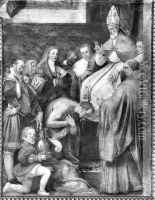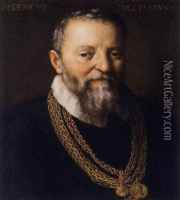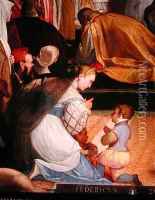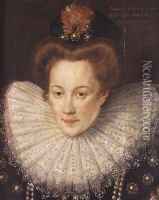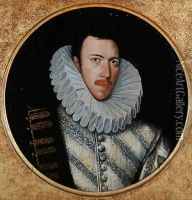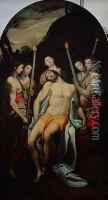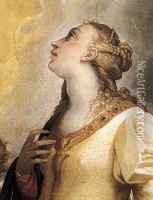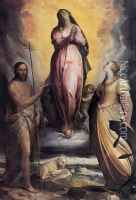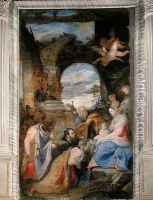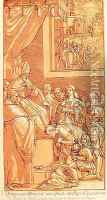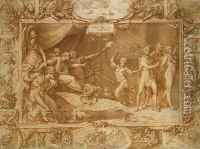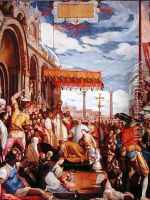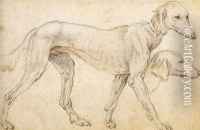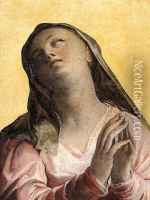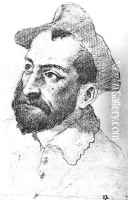Federico Zuccaro Paintings
Federico Zuccaro, also known as Federico Zuccari in some references, was an Italian Mannerist painter and architect of the Renaissance period. Born around 1540/1541 in Sant'Angelo in Vado, Duchy of Urbino, Italy, he was the younger brother of Taddeo Zuccaro, who was also a painter. His early life was spent in his brother's workshop, and his style was heavily influenced by Taddeo's work. Federico worked in Rome, where he decorated the Villa Farnese at Caprarola and the ceiling of the Sistine Chapel's Sala Regia, among other significant commissions.
After his brother's death in 1566, Federico took over the management of their workshop. He completed several of Taddeo's unfinished works and developed his own reputation as an accomplished artist. Zuccaro's travels took him across Europe, including a period in Spain where he worked for Philip II. He later went to England, where he made portraits of Queen Elizabeth I and other nobility.
Zuccaro's style is characterized by its elegant figures and the use of bright colors. He was influenced by Michelangelo and Raphael, and his work is a reflection of the late Renaissance's transition towards the more exaggerated and dramatic aspects of Mannerism. Despite his success as a painter, Federico also had his share of controversies, often finding himself at odds with other artists and patrons due to his outspoken nature and strong opinions.
In addition to painting, Zuccaro was an architect and wrote theoretical works on art. His treatise, 'L'idea de' scultori, pittori, et architetti' (The Idea of Sculptors, Painters, and Architects), is considered an important text on Mannerist aesthetics. He founded the Accademia di San Luca in Rome, an institution that plays a significant role in the art world to this day.
Federico Zuccaro's contribution to art extends beyond his paintings and includes his efforts in education and theory. He passed away in Ancona in 1609, leaving behind a legacy of artistic accomplishment and influence.
